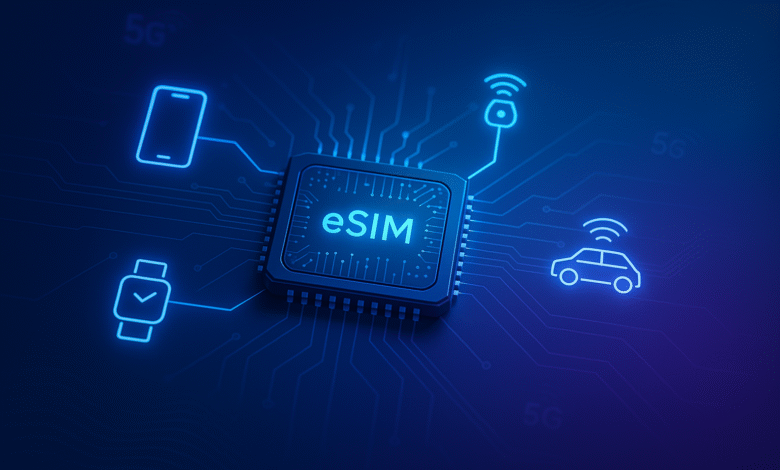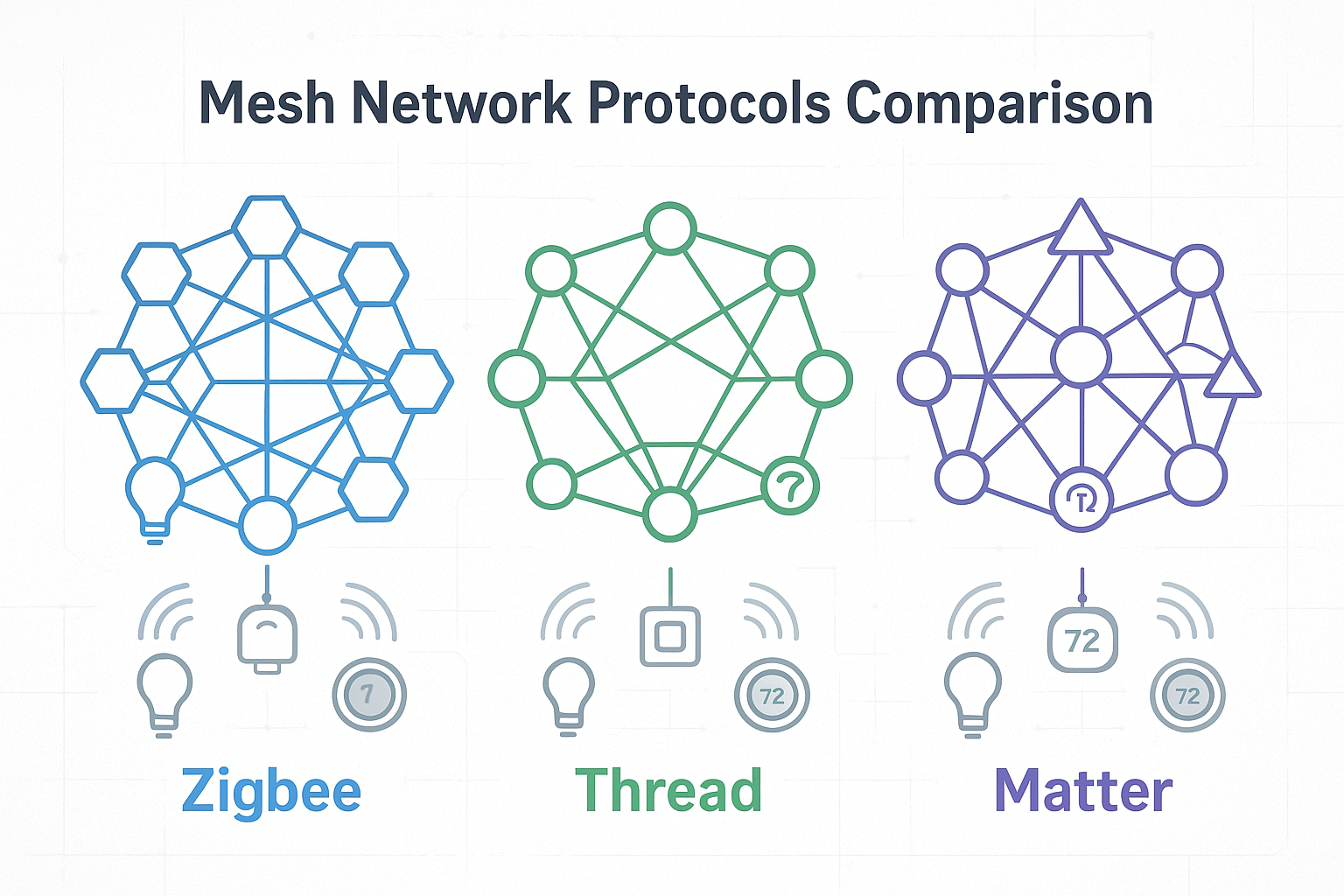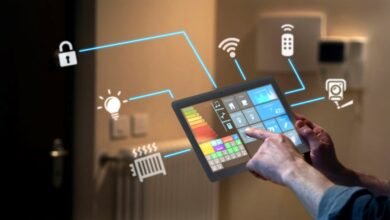The Future of eSIM Hardware 2026
Discover the future of eSIM hardware technology. Learn how embedded SIM, iSIM, and remote provisioning are transforming connectivity for IoT, smartphones, and 5G networks worldwide.

The way we connect our devices is changing fast. For decades, we have used physical SIM cards—those tiny plastic chips we plug into our phones. But now, a new kind of technology called eSIM hardware is taking over. eSIM stands for embedded SIM, and it’s changing everything about how devices stay connected to phone networks.
Instead of a physical card, an eSIM is a tiny chip that’s soldered directly into your device when it’s built in the factory. The exciting part is that you can switch phone companies without touching your phone. Even better, a new technology called iSIM (integrated SIM) is on the way and promises to be even smaller and more powerful.
This article explains what eSIM hardware for the future means, how it works, and why it matters for your phone, smartwatch, car, and all your connected devices. Whether you care about technology or just want to understand what’s coming next, this guide will show you everything you need to know.
What is eSIM Hardware? Understanding Embedded SIM Technology
eSIM hardware is basically a SIM card that’s built into your device. Think of it like this: instead of carrying a small plastic card, the SIM function becomes part of your phone’s circuit board. When manufacturers create your phone, they solder a special chip called an eUICC (which stands for Embedded Universal Integrated Circuit Card) directly onto the phone’s motherboard.
The traditional SIM card has been around since the early 1990s. Back then, phones were big, and SIM cards were like tiny credit cards. Over time, phones got smaller, and so did SIM cards. Today’s smallest physical SIM is called a nano-SIM. But here’s the problem: even these tiny cards take up space inside modern devices. With eSIM technology, there’s no card at all. This means phone makers can make devices thinner, smaller, and cooler-looking.
An eSIM works the same way a regular SIM does, but it’s programmed differently. Instead of being locked to one phone company when it’s made, an eSIM can connect to different carriers. This happens through something called remote SIM provisioning, which means your phone company can send new connection information wirelessly to your device. You don’t need to visit a store or wait for a new SIM card in the mail.
How eSIM Hardware Works: The Technical Side Made Simple
Let’s break down how eSIM hardware actually works so you can understand it without needing a computer science degree.
Inside your phone, there are several important chips working together:
- The main processor (the brain of your phone)
- The cellular modem (the part that talks to phone towers)
- The eUICC chip (your eSIM hardware that holds your carrier profile)
- A secure section (protects sensitive information)
When you buy a device with eSIM technology, the manufacturer doesn’t know which phone company you’ll use. So instead of programming a specific carrier’s information, they install empty profiles onto the eUICC. Later, when you activate your phone, you pick your carrier, and the carrier sends your unique connection details wirelessly to your device’s eUICC. This process is called remote provisioning.
The cool part about eSIM hardware is that this can happen instantly, sometimes in just a few seconds. Compare that to old SIM cards: you had to get a physical card, put it in your phone, wait for activation, and sometimes wait days for it to work.
A major advantage of eSIM hardware is that you can switch carriers without buying a new physical card. Your phone already has the ability to hold different carrier profiles at the same time. You can switch between them by just tapping a few buttons in your settings. This is why travelers love eSIM technology—they can switch to local carriers when they travel without buying physical SIM cards.
The Evolution: From Physical SIM Cards to Embedded eSIM and iSIM
The story of SIM technology shows how innovation keeps making things better and smaller.
Generation 1: Physical SIM Cards (1990s-2000s) The first SIM cards were huge and easy to damage. As phones evolved, so did SIM sizes. The industry created smaller versions: mini-SIM, micro-SIM, and finally nano-SIM.
Generation 2: eSIM and eUICC (2015-Present) The eSIM changed the game by eliminating the physical card entirely. This embedded SIM technology gave people freedom to switch carriers without changing hardware. Today, eSIM is standard on most new phones and smartwatches.
Generation 3: iSIM and Integrated SIM (2024-Future) The newest breakthrough is called iSIM (integrated SIM). Here’s the difference: an eSIM is still a separate chip soldered onto your phone’s circuit board, but an iSIM is built directly into your phone’s processor itself. This means even less space, even less power consumption, and even better security.
According to industry experts, the iSIM market is expected to reach 300 million units by 2027. This shows how quickly the technology is being adopted.
eSIM Hardware Benefits: Why This Technology Matters
eSIM hardware brings real advantages that change how devices work:
Smaller Device Designs
With eSIM technology, phones don’t need dedicated SIM slots. Manufacturers can make devices thinner, more compact, and with fewer unnecessary openings. This also means phones can be more waterproof and durable since you don’t need to open them up to change SIM cards.
Freedom to Switch Carriers
One of the biggest benefits of eSIM hardware is carrier flexibility. You’re not stuck with one phone company just because you bought your device from them. With remote provisioning, switching carriers takes minutes instead of days. This is especially helpful for:
- People who travel internationally
- Customers unhappy with their current carrier
- Families managing multiple devices
- People moving to new countries
Lower Power Consumption
eSIM hardware, especially the newer iSIM technology, uses less battery power than traditional SIM cards. For devices like smartwatches and fitness trackers that need to run for days on a single charge, this is huge. An iSIM can extend battery life by hours or even days on some devices.
Better Security
eSIM hardware provides superior security compared to physical SIM cards. Your eSIM information is locked inside a secure section of your device called a Tamper-Resistant Element (TRE). This makes it almost impossible for hackers to steal your information or clone your SIM.
Simplified Manufacturing
For companies making millions of devices, eSIM hardware means they can make one version of a product for the whole world. No need to create different versions for different countries. This saves money and speeds up production.
Future-Proof Global Connectivity
With eSIM technology, devices can adapt to changes in how networks work. If your carrier shuts down their old network, a simple wireless update can switch your device to a new network. Your device stays useful for its entire lifetime instead of becoming obsolete.
eSIM Hardware for IoT: Beyond Smartphones
While eSIM started with phones, the real revolution is happening in IoT (Internet of Things) devices. IoT means all the “smart” devices that connect to the internet—smartwatches, fitness trackers, connected cars, home security systems, water meters, and thousands of others.
eSIM hardware is perfect for IoT because:
- Smaller Components – IoT sensors are tiny, and eSIM technology takes up less space than physical SIM slots
- Remote Management – Companies can update thousands of devices at once without sending technicians to each one
- Cost Savings – eSIM deployment reduces manufacturing and operational costs
- Multi-Network Support – Devices can switch between networks for better coverage and pricing
- Long Device Life – IoT devices often operate for 5-10 years. Future-proof connectivity ensures they stay relevant
Real-world examples of IoT eSIM use include:
- Smart meters that track water and energy usage
- Connected vehicles that send location and diagnostic data
- Medical wearables that monitor patients’ health in real time
- Asset trackers that follow packages and shipments globally
- Smart city infrastructure like traffic lights and environmental sensors
The market for IoT eSIM modules is growing rapidly, with companies shipping hundreds of millions of devices with this technology.
iSIM: The Next Level of eSIM Hardware
While eSIM technology is still being adopted, the industry is already moving to the next step: iSIM (integrated SIM).
Here’s what makes iSIM different from eSIM:
| Feature | Physical SIM | eSIM | iSIM |
|---|---|---|---|
| Form Factor | Removable plastic card | Soldered chip | Built into processor |
| Space Required | Needs dedicated slot | Needs small space | No extra space |
| Power Consumption | Higher | Moderate | Very low |
| Security | Standard | Strong | Strongest |
| Manufacturing Cost | Higher | Moderate | Lower at scale |
iSIM technology embeds the SIM function directly into your device’s processor, often alongside the cellular modem. This integration means:
- Even smaller devices become possible
- Battery life improves significantly
- Security increases because there’s no separate chip to attack
- Manufacturing costs drop because fewer components are needed
Research shows that iSIM could deliver a 13% total cost savings when compared to traditional SIM cards across 30 different IoT use cases.
Companies like Qualcomm and Thales are already releasing iSIM products that follow GSMA standards for remote provisioning. By 2027, iSIM technology is expected to reach 300 million devices annually.
The Role of 5G and Future Networks with eSIM Hardware
5G technology is the fastest cellular network ever built, and eSIM hardware is crucial to its success.
Here’s why they work so well together:
Faster Network Switching
5G networks exist alongside older networks. eSIM technology lets devices automatically switch between them based on what’s available. If a 5G signal is strong, your device connects to 5G. If it drops, your device switches to 4G without you noticing. This automatic network optimization makes connections more reliable.
Better Performance
5G requires more sophisticated security and faster provisioning. eSIM hardware handles this automatically through hardware-based security. Your device confirms it’s authentic before connecting to networks, which speeds up connection times.
Global Coverage
5G is rolling out differently in different countries. eSIM technology with remote provisioning means your device can connect to any carrier’s 5G network around the world. No more buying different SIM cards for different countries.
Connection Quality
5G eSIM integration means more reliable connections because your device can:
- Switch between networks automatically
- Maintain connection even during network transitions
- Connect to multiple networks simultaneously when needed
- Maintain quality video calls and streaming
eSIM Hardware Challenges and What’s Being Done About Them
While eSIM technology is fantastic, it’s not perfect. There are challenges that the industry is working to solve.
Challenge 1: Switching Between Devices Isn’t Easy
Unlike physical SIM cards, moving an eSIM from one phone to another requires help from your carrier. The industry is working to make this simpler, but it’s not there yet.
Challenge 2: Limited Device Support
Not every older phone supports eSIM hardware. As of 2025, around 33% of cellular IoT devices use eSIM technology. The older 67% still use physical SIM cards. This is changing quickly though.
Challenge 3: Carrier Support
Some smaller phone companies haven’t upgraded their systems to support eSIM provisioning yet. Bigger carriers like AT&T, Verizon, and T-Mobile have excellent eSIM support, but regional carriers are catching up.
Challenge 4: Understanding and Education
Many people don’t understand how eSIM works or its benefits. This is why articles like this one are important—spreading knowledge helps adoption.
The industry is addressing these challenges through:
- New standards like GSMA’s SGP.32 specification for eSIM ecosystem improvements
- More carriers offering remote provisioning services
- Better user education about eSIM technology
- Development of iSIM technology to solve remaining hardware limitations
Real-World Applications: eSIM Hardware in Action Today
eSIM hardware isn’t just theoretical—it’s already transforming real industries.
Consumer Devices
Apple’s iPhone and Apple Watch were among the first mainstream eSIM devices. Samsung, Google, and other manufacturers quickly followed. Today, most flagship phones have eSIM capability.
Automotive
Connected cars use IoT eSIM modules to stay in touch with manufacturers and provide services like navigation, emergency response, and vehicle diagnostics. Tesla and other automakers rely on eSIM deployment for their connected features.
Healthcare
Wearable health monitors use eSIM technology because these devices need to be completely sealed and waterproof. With embedded SIM, there’s no opening needed for a SIM slot, making devices more durable and reliable.
Industrial and Enterprise IoT
Factories use eSIM hardware in sensors that monitor equipment, track inventory, and manage supply chains. The ability to remotely provision thousands of devices makes managing large operations much easier.
Smart Cities
Connected infrastructure like traffic lights, parking meters, and environmental sensors use eSIM technology for reliable, manageable connectivity across entire cities.
The Statistics: Why eSIM Hardware Matters for the Future
Numbers show how big eSIM is becoming:
- By 2025, 98% of mobile network operators are expected to offer eSIM services
- As of 2024, over 650 million devices with eSIM capability were in use worldwide
- The iSIM market is projected to reach 300 million units by 2027, representing 19% of eSIM shipments
- eSIM devices are growing at 63% annually from 2023 to 2028
- Predictions show that by 2025, most new smartphone models will feature eSIM hardware as standard
These numbers show that eSIM technology for the future isn’t coming—it’s already here.
Choosing eSIM Hardware: What You Should Know
If you’re buying a new device and have the choice between eSIM and physical SIM, here’s what to consider:
Go with eSIM if:
- You travel frequently
- You like trying different carriers
- You want the smallest, most modern device
- You need better battery life (especially for IoT)
- You want the most secure option
Stick with Physical SIM if:
- You need to share your SIM card between devices
- Your carrier doesn’t support eSIM yet
- You want the absolute simplest setup
- You rarely change carriers
For new purchases, eSIM hardware is almost always the better choice because it gives you more flexibility and uses newer technology.
The Future of eSIM Hardware: What’s Coming
Looking ahead, eSIM hardware for the future is heading in exciting directions:
AI-Powered Network Selection
Artificial intelligence could make eSIMs automatically pick the best network based on speed, cost, and reliability. Your device would intelligently switch networks without you doing anything.
Enhanced Security Features
Future eSIM hardware will include biometric verification and AI-powered fraud detection to make connections even more secure.
Increased Integration with Cloud
As more computing moves to cloud servers, eSIM technology will provide the secure, always-on connectivity that makes this possible.
Environmental Sustainability
eSIM adoption eliminates billions of plastic SIM cards from being produced and thrown away. This is a major environmental benefit.
Further Miniaturization
iSIM technology will keep getting smaller and more efficient, enabling devices we can barely imagine today—from tiny health sensors to ultra-compact IoT tracking devices.
Global Device Standards
Eventually, every device will use the same eSIM hardware standard worldwide, meaning true plug-and-play global connectivity.
For more information about the latest eSIM technology developments, check out the GSMA Remote SIM Provisioning specifications, which define industry standards for eSIM ecosystem growth.
To understand more about embedded SIM hardware and iSIM technology adoption, you can read IoT Analytics’ comprehensive guide to eSIM and iSIM in the IoT market, which tracks hardware shipments and eSIM deployment trends.
Conclusion
eSIM hardware for the future represents one of the biggest changes in how devices connect to networks since mobile phones were invented. Whether you’re using a smartphone, smartwatch, connected car, or industrial sensor, eSIM technology is making connectivity simpler, faster, more secure, and more flexible than ever before. From embedded SIM technology that’s already in millions of devices to exciting new iSIM hardware on the horizon, the way we think about SIM cards is completely changing.
The future doesn’t need removable plastic cards—it needs small, powerful, secure chips built right into devices that let you connect anywhere, anytime, to any network. As 5G networks expand, as IoT devices multiply, and as new technologies emerge, eSIM hardware will be at the center of it all, enabling a world where staying connected is simpler and more powerful than we ever thought possible. The future of connectivity isn’t coming soon—it’s already here, and it’s called eSIM.











